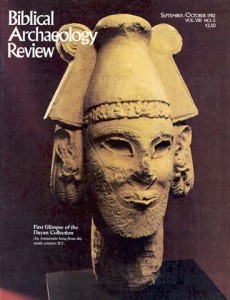Scholars’ Corner: New Testament Illuminated by Dead Sea Scrolls
In an article entitled “The Dead Sea Scrolls and the New Testament after Thirty Years” (Theology Digest, Winter 1981), Father Joseph A. Fitzmyer of The Catholic University of America, Washington, D.C., reviews the state of current research.
Fitzmyer observes that fewer than 25 percent of the 15,000 fragments from Cave IV at Qumran have been published, so we are still at the beginning. “The study of the Scrolls and of their relation to the New Testament will continue to be one of the cutting edges of progress in biblical scholarship in this and the coming century,” he says.
Fitzmyer notes that until about 1955, few New Testament scholars worked with the Dead Sea Scrolls because “they simply could not read the texts. The emphasis on the Hellenistic background of New Testament writings, which had been the vogue prior to 1955, usually left little concern for its Palestinian or Semitic background, and even less for the language in which Palestinian literature might have been written.” That is scarcely true today. The Palestinian Semitic background of the New Testament is now a major emphasis—in large part because of the Dead Sea Scrolls.
Already a library member? Log in here.
Institution user? Log in with your IP address.

